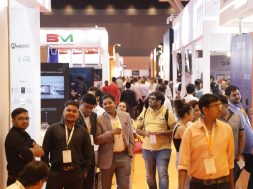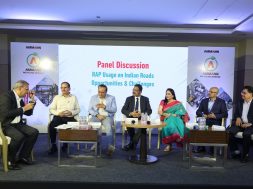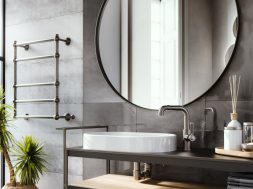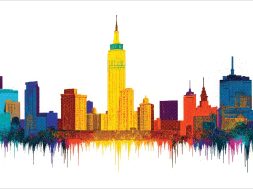Architecture that’s ecological and sustainable
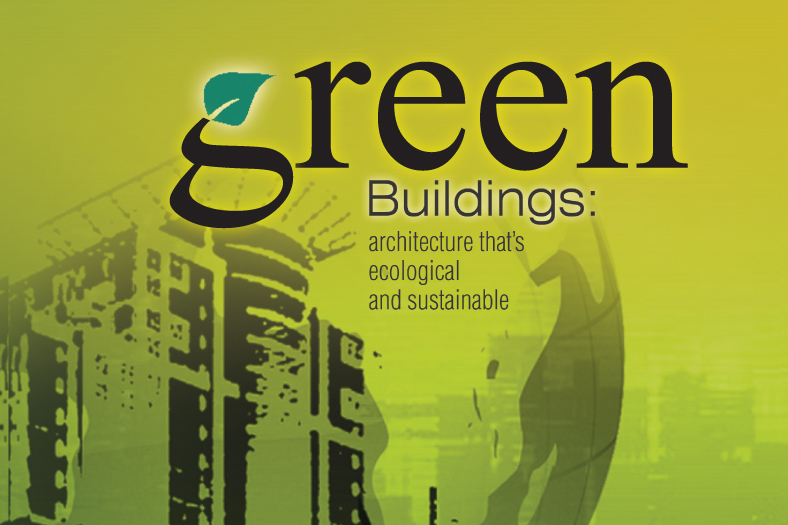
Program planning, selection of site and design team, structure orientation, building systems design aid sustainable green construction.
With the government offering subsidies and incentives to developers constructing green buildings, the construction industry in India is undertaking an array of green building projects. According to reports, over 4,300 projects are registered for green technology in the country. Green pre-certified projects are being considered by the Ministry of Environment and Forests (MoEF) and state-wise incentives have also started rolling in.
While green buildings have a thrust on architectural design, building material has an equally important role to play. Nowadays, the buildings on campus are also gradually being turned eco-friendly which includes using equipment that can effectively reduce the negative impact on the environment.
Strategies to build more environmentally-responsible buildings are called for from the end of project managers, engineers, architects, landscape architects, value analysis consultants, green consultants, cost consultants, energy engineers, construction managers, government agencies, among others involved in design.
Influencing architecture
Architecture is directly influenced by eco-friendly construction as human settlement is based on natural resources like air, water and sun. Architecture based on sustainable aspect respecting the solar and wind movements, orientation and landscape use eco-friendly material, as core components, creates the human settlement embodied with nature. Modern trends of design need to respect the region, climate, culture and socio-economic factors and cannot be intimated globally and universally, believe experts.
Eco-friendly construction has influenced architecture in several ways owing to new energy- efficient materials and green technologies.
Ar. Surinder Bahga, Sakaar Foundation says, “Torrent Research Centre, Ahmedabad by Ar. Nimish Patel. Passive Downdraft Evaporative Cooling (PDEC) was attempted in the building through a system of designated inlets and outlet shafts due to their locations, sizes and heights. Through their complex but simulated and in-depth researched configuration, the required movement of air in different spaces is generated without using any mechanical or electrical energy.”
The savings from the electricity bills have paid back the additional investment in construction in less than one year, and the cost of civil works in less than 13 years of its operation. The savings will be equal to the entire investment of the project in 39 years, Bahga added.
Leadership in Energy and Environmental Design (LEED) is the most widely used green building rating system and can be incorporated during the design phase of a building.
According to Mili Majumdar, Managing Director, Green Business Certification Institute Pvt Ltd, India and Senior Vice President, USGBC, “The need of the hour is passive bioclimatic architecture where natural elements like sunshine and wind direction are taken into account while building both, residential and commercial spaces.”
Using shading windows to reduce heat gains owing to pacifying heat ingress indoors, among other changes in architecture can improve the performance of buildings, she added.
Saving cost
When it comes to green buildings, there are various techno-economic factors to be considered – the first being building orientation and form – which itself does a major part of the job in making the structure green via self-shading, north light advantages, etc. Also, today, the green building industry has come much ahead, hence, building eco-friendly is economical given players now able to provide pocket-friendly solutions or products. Lastly and most importantly, green buildings are a long-term economy which must always be considered while thinking cost saving for such buildings. What is important is that the right balance between the design features, specified green products and materials and an optimally-budgeted capex.
Insulation in walls and roofs, use of shaded windows with high performance glass, ample daylighting and ventilation, provision for solar water heating systems, and the use of LED lighting in common areas are some of the most effective energy saving features. In addition, daylit homes reduce lighting costs and well-ventilated homes have lower heating and cooling costs. Windows and fenestrations are another source of heat transfer. Use of high-performance air-conditioning system and use of controls also help save energy costs.
“We need to develop design in hot and humid regions to maximise day light and minimise heat gain. The insulating materials in building envelope, the wall and window ratio and the shape and size of building would help in saving the cost in construction and make buildings green,” says Prof. Charanjit. S. Shah, Founding Principal, Creative Group.
Unlike conventional buildings, green building uses less water, optimises energy efficiency, conserves natural resources, generates less waste and provides healthier spaces for occupants. The practice of creating structures and using processes that are environmentally responsible and resource-efficient throughout a building’s life-cycle from site selecting to design, construction, operation, maintenance, renovation and deconstruction. This practice expands and complements the classical building design concerns of economy, utility, durability, and comfort. Green building is also known as a sustainable or ‘high performance’ building.
According to Ar.Er.S. P. Anchuri, “Green new buildings can have tremendous benefits, both physical and indefinable. The most concrete benefits are the reduction in water and energy consumption right from day one of occupancy. The energy savings could range from 20 – 30 per cent and water savings around 30 – 50 per cent.”
Enhanced air quality, excellent daylighting, health & well-being of the occupants, safety benefits and conservation of scarce national resources, are among the intangible benefits. The important elements of green building design that are also cost effective include water conservation, handling of consumer waste, energy efficiency, reduced use of fossil fuels, reduced dependency on virgin materials, health and well-being of occupants.
Fortunately, there are numerous ways to improve a building’s energy efficiency, from insulating walls to installing automatic shut off switches for lights. Green buildings often include measures to reduce energy consumption – both the embodied energy required to extract, process, transport and install building materials and operating energy to provide services such as heating and power for equipment. Onsite generation of renewable energy through solar power, wind power, hydro power, or biomass can significantly reduce the environmental impact of the building.
The environmental impacts of buildings are enormous. Conventional buildings use large amounts of energy, land, water, and raw materials for their construction and operation. They are responsible for large greenhouse gas emissions as well as emissions of other harmful air pollutants. They also generate large amounts of construction and demolition waste and have serious impacts on plants and wildlife.
Proper use of green material available locally can make buildings more sustainable. Green materials like DG units, LED fixtures, plumbing, green paints, bricks, cement, rain water harvesting enhances the performance of green buildings.
More sustainability
These strategies with following stages if followed in the design process building spaces can be more sustainable.
• Program planning and site selection
• Selection of design team
• Site design
• Building orientation and configuration
• Building systems design
– Energy design
– Structure design
– Envelope design
– Ventilation design
– Water systems design
– Lighting design
– Mechanical design
– Finalise building systems design
• Interior finishes
• Specifications/construction drawings
• Construction and commissioning
• Operations and maintenance
According to Ar. Prem Nath, Prem Nath & Associates, green building construction and sustainability largely goes in tandem with each other. For instance, building is constructed green to be sustainable. While developing a green building project, the following considerations should be made – sustainability and longevity of the project, energy efficiency, durability, load reduction or zero load on waste stream, renewability and recyclability. By keeping the aforementioned factors in mind, one can ensure sustainable green building.
“In all my projects, I ensure that I design an eco-friendly development and it shall sustain itself for a long time – with a policy of ‘Zero Discharge & Zero Depletion’, ” he added.
India is rich in heritage and has developed through the various process of functionality. Architecture related to the principles of Vastu Shastra, respecting solar and wind movement and creating the built environment with respect to the nature, helps in creating sustainable architecture.
The rich ethnic architecture represented through courtyard planning, mutual shading, narrow streets are some fundamental principles helping to create green buildings.
Since time immemorial, the ancient Indian sustainable cities respect natural resources, conserve own water resources like lakes, wells etc., in the hot dry deserts, use of insulating mud walls, thatch roofing, etc. These are some of the principles that need to translate contemporarily to create modern sustainable and green settlement.
Need of the hour is passive bio-climatic architecture where natural elements like sunshine and wind direction are taken into account.
Mili Majumdar, Managing Director, Green Business Certification Institute Pvt Ltd, India and Senior Vice President, USGBC
Insulating materials in building envelope, wall and window ratio and the shape and size of building would help in saving cost in construction and make buildings green.
Prof.Charanjit. S. Shah, Founding Principal, Creative Group
Cookie Consent
We use cookies to personalize your experience. By continuing to visit this website you agree to our Terms & Conditions, Privacy Policy and Cookie Policy.
